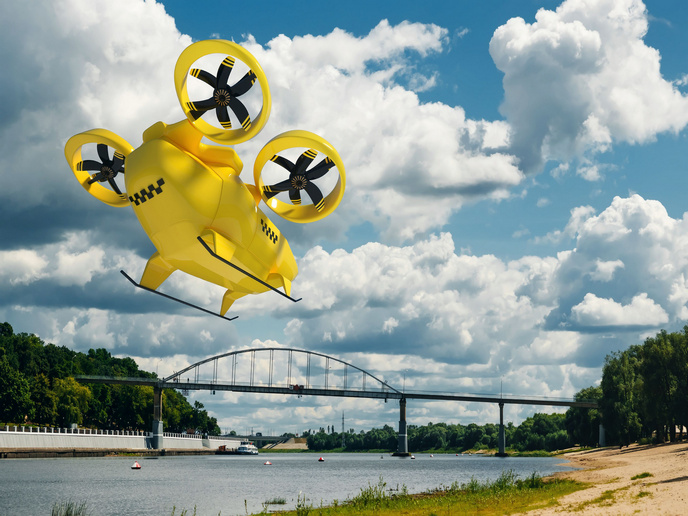Urban air mobility reaching new heights
While flying cars have long been the stuff of science fiction, the EU-funded AMU-LED project is developing the real-world version. It is off to a fantastic start. Researchers recently demonstrated the capability of U-space to enable urban air mobility (UAM) by performing several simulations and flights in urban scenarios. Launched in 2021, the 2-year project is tasked with designing a comprehensive concept of operations and defining urban air missions. Its overall aim is to invent, refine and structure UAM as a business sector while keeping it sustainable and interoperable within the U-space framework. U-space is a set of specific services and procedures intended to ensure safe and efficient access to airspace for a large number of unmanned aerial vehicles commonly known as drones. AMU-LED is part of the EU’s Horizon 2020 programme framed in the SESAR Joint Undertaking. The ultimate goal is to perform large-scale demonstrations of UAM services with air vehicles and to safely integrate different types of unmanned aerial system (UAS) operations in urban environments to achieve increasingly sustainable, smart cities.
Demo flights pass with flying colours
Flight demonstrations were conducted by AMU-LED project partner EHang with its EH216 autonomous aerial vehicle (AAV) in Spain in October 2022. A company press release reports the flight demonstrations in Spain were successful. “The EH216 flight demonstrations were recently conducted at the Rozas Airborne Research Center (‘CIAR’) of Spain’s National Institute of Aerospace Technology in Lugo, Galicia, Spain. These demonstrations verified and validated the UAM Concepts of Operations (‘ConOps’), to successfully accomplish objectives of the AMU-LED project.” The demo flights were safely and efficiently operated under various simulated scenarios. These included the presence of other UASs in the surrounding airspace, and the successful implementation of conflict management procedures during flight and approach to the landing vertiport, according to the press release. “EH216’s flight demonstrations are of paramount importance to the AMU-LED project, which enables the development of UAM and U-space in Europe,” comments Victoria Jing Xiang, COO of EHang Europe and Latin America. “With the EH216 flight demonstrations, EHang is proud to continue contributing to innovative deployments of safe, sustainable and efficient aerial transportation for everyone with our cutting-edge AAV technologies.” EHang partnered with world-renowned UAM stakeholders that include aerospace research institutes, universities, UASs, and eVTOL manufacturers and operators, as well as air navigation and U-space service providers. All share the common goal for developing a safe and sustainable UAM environment, interoperable within the U-space structure. With such partners, AMU-LED (Air Mobility Urban - Large Experimental Demonstrations) will continue to explore the boundaries of the sky to make flying technologies a key feature of tomorrow’s smart cities. For more information, please see: AMU-LED project website
Keywords
AMU-LED, air mobility, urban air mobility, UAM, U-space, air, drone, unmanned aerial system



